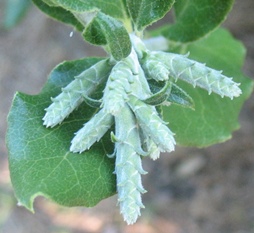
Version 3-29-2021
See also Using heat to eradicate soil-borne plant pathogens from nursery potting media ("soil sterilization")
Potting media should be heat treated using steam, aerated steam, or other moist heat applications. If using a dry heat source, media should be moistened to near field capacity. Heat potting media until the temperature of the coolest portion of the treated soil has maintained a temperature of at least 140 F (60 C) for at least 30 minutes. This heat treatment regime is lethal to most plant pathogenic fungi and oomycetes such as Phytophthora (Table 2) but does not kill all soil microorganisms and will not result in “sterile” soil.
Excessive heating at high temperatures (generally above 180-212 F [82-100 C]) can increase the potential for phytotoxicity. Potting media, especially those containing readily-decomposed organic matter, can develop levels of ammonium, manganese, or other compounds that are phytotoxic to some plants. Phytotoxicity is usually temporary and is reduced over time or with leaching.
As noted in the BMPs, care must be taken to avoid contamination of potting media after heat treatment. Heat treated material should only be transferred into sanitized containers using sanitized tools by workers with clean gloves following phytosanitary working practices.
Solar heating. When heat-treating nursery potting media using solar energy (solarization), temperatures fluctuate based on sun exposure. The effectiveness of solar heating is also limited by the time required for heat to penetrate the media. In a static solarization system (media is not mixed during heating), potting media depth from the side of the container or pile should no more than 6-10 inches (15-25 cm). Media should be moistened to near field capacity before solarization to increase the effectiveness of the heat treatment and to improve transfer and retention of heat by the media.
For nursery use, a simple solar oven can be used to heat potting mix where unobstructed sunlight is available for at least 5 hours centered around solar noon. Temperature loggers should be used to ensure that the coolest, shaded portion of the treated material in the oven reaches the appropriate target temperature for the necessary time duration e.g., at least 140 F (60 C) for a minimum of 30 minutes. During long days with unrestricted solar access, this temperature target can be reached in a single day. Shading or clouds can reduce maximum temperatures and reduce the duration of peak temperatures. In such situations, multiple day treatments may be needed. Solarization should continue until the coolest portion of the potting media has been heated to a temperature of 113 F (45 C) for at least 15 hours or a temperature of at least 122 F (50 C) for at least 2 hours. In some locations, it may be possible to reach these target temperatures in a closed, unshaded greenhouse during the summer.
As an alternative to a solar oven, moist media can be piled to a depth of no more than 10 inches (25 cm) on an insulated platform (e.g., a table topped with a foam insulation panel) and tightly covered with 6 mil clear thermal anti-condensate greenhouse film. This material has efficient thermal qualities and a long service life. In cooler areas, using a double layer of plastic film separated by an air gap can reduce heat loss.
3-29-2021- added more information about solarization.